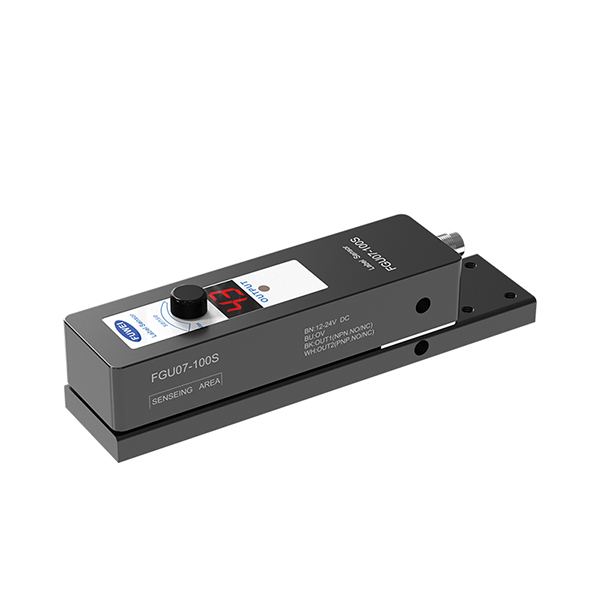Overview of label sensors and their key features
2024-05-11
A label sensor is a type of sensor used in automatic labeling machines and systems to detect the presence, position, and characteristics of labels on packaging materials, products, or conveyor belts. Label sensors play a crucial role in ensuring accurate and efficient labeling processes in various industries, including manufacturing, packaging, logistics, and labeling. Here's an overview of label sensors and their key features:
1. Detection Principle: Label sensors use various detection principles to detect labels, including:
- Optical Sensors: Optical label sensors use light beams to detect the presence or absence of labels. They may employ photoelectric sensors, laser sensors, or fiber optic sensors to detect labels based on changes in light intensity or reflection when a label passes through the sensor's detection zone.
- Ultrasonic Sensors: Ultrasonic label sensors use sound waves to detect labels. They emit ultrasonic pulses and measure the time it takes for the pulses to reflect back from the label surface. Changes in the reflected signal indicate the presence or absence of labels.
- Capacitive Sensors: Capacitive label sensors detect labels based on changes in capacitance when a label passes in close proximity to the sensor. Labels with different materials or thicknesses can affect capacitance, allowing the sensor to detect labels accurately.
- Inductive Sensors: Inductive label sensors use electromagnetic induction to detect metallic labels or labels with metallic components. Changes in the electromagnetic field caused by the presence of a label trigger the sensor's detection mechanism.
2. Label Characteristics: Label sensors can detect various characteristics of labels, including:
- Presence/Absence: Label sensors can detect whether a label is present or absent on a product or packaging material.
- Positioning: Label sensors can determine the position of labels relative to a reference point or marking on the packaging material.
- Orientation: Some label sensors can detect the orientation or alignment of labels to ensure correct positioning during labeling processes.
- Size and Shape: Advanced label sensors can differentiate between labels of different sizes, shapes, colors, or patterns, allowing for flexible labeling applications.
3. Mounting Options: Label sensors are typically mounted on labeling machines, conveyor systems, or packaging lines in a position where they can accurately detect labels as they pass by. They may be mounted directly above or below the labeling area or integrated into the conveyor system for seamless operation.
4. Output Signals: Label sensors provide output signals, typically in the form of digital signals (e.g., PNP or NPN) or analog signals, to indicate the presence, position, or characteristics of labels. These signals are used to control labeling processes, trigger actuators, or communicate with other equipment in the production line.
5. Adjustability and Sensitivity: Many label sensors offer adjustable sensitivity settings to accommodate different label materials, colors, and sizes. This allows users to fine-tune the sensor's detection capabilities for optimal performance in various labeling applications.
6. Reliability and Durability: Label sensors are designed to withstand harsh industrial environments and repetitive operation. They are constructed from durable materials and feature rugged housings to protect sensitive components from dust, moisture, and mechanical damage.
Label sensors are essential components in automatic labeling systems, ensuring accurate and efficient labeling processes in a wide range of industrial applications. By reliably detecting labels and providing real-time feedback, label sensors help improve productivity, quality, and consistency in labeling operations.



